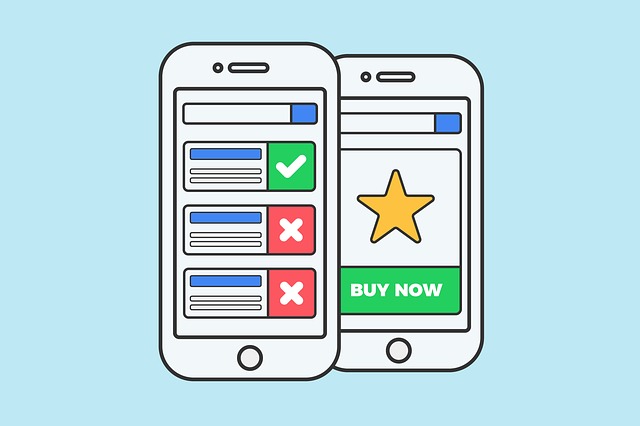Just because your website is accessible on a mobile device, that doesn’t make it mobile-friendly. With the number of smartphone owners growing every moment, and more and more users doing business on phones, businesses need to make a mobile-responsive website.
Millions of users use their smartphones for visiting websites, purchasing or doing research. So if your website or eCommerce site isn’t optimized for mobile traffic, you could be losing a lot of business and sales.
Most businesses don’t understand how important a mobile responsive website is. This is why businesses need tips on how to create a mobile-friendly website. In this article, we’ve mentioned the 12 best tips for creating a mobile-friendly website. Let’s start with this guide.
12 Steps for Creating a Mobile Friendly Website
Every website should be mobile responsive as it helps in generating more sales. But, most brands end up failing in creating a mobile-friendly website. So, here are the tips on creating a mobile-friendly website:
1. Be Responsive
You should use responsive technological frameworks, that basic layout elements in a grid and then shift that grid based on different screen sizes. Making a responsive website is a more unified approach to web development that allows you to build a better experience for customers.
In addition to being a better user experience across devices, it makes it so that you don’t need to have two websites for mobile and desktop users.
2. Follow Your Fingers
While making a mobile responsive website, you need to make sure that your site can be navigated with one thumb and require no pinching or zooming to use. This is one of the most crucial tips for creating a mobile responsive site. If you have to pinch to zoom, your content is too small and does not fit on the particular screen.
All the users visiting a mobile website will be using a touchscreen device, so make sure that the buttons and elements are even for people with larger fingers.
3. Simple Design Works for You
A clean design and focused website can improve the number of sales you can bring. A user will be on your website for just a couple of seconds, so you only have these couple of seconds to convey your message.
If your website has too many distracting elements, then your potential customers won’t be able to see what’s important. If you plan on using images to your advantage, then use smaller-sized images as it improves your website’s loading speed.
4. Keep Content Concise and To-The-Point
Sometimes a good-looking website is ruined because of cluttered content. You need to make sure that you get your point across with limited words. The screen on a smartphone is smaller than a desktop computer, so make sure that your content is easily readable on a smartphone. Mobile users often scroll quickly, so use content that can grab a user’s attention.
5. Icons Are Important
Building on the point above, a smartphone’s screen is smaller than a desktop. To prevent your site from looking cluttered, use conventional mobile icons instead of words. These help in sending your message across without filling the screen with unnecessary texts. Using these symbols makes the user experience better for them.
6. Reduce Website Loading Speed
The mobile internet is much slower than fiber internet and other internet connectivity. So you need to make sure that mobile users don’t spend minutes waiting for the website to open.
So make sure to strip down the heavy files that exist on your desktop site, including heavy videos and photos. Mobile developers should also consider replacing bulk JavaScript libraries such as jQuery Mobile with standalone JavaScript.”
To make a mobile responsive website, you need to consider the challenges of mobile web users.
7. Do Overdo Java
You should avoid excessive JavaScript in your mobile websites where possible because it runs differently across multiple browsers and devices. This doesn’t mean that you shouldn’t use JavaScript, but be rather clever about it. You should keep in mind that overusing JavaScript can affect the performance of your website.
8. Make Contact Easier
Any user that visits your website is a potential sale, and you need to make sure that they know a way to contact your brand. Often most visitors on your website are looking for store hours, a contact, or a booking number. Some users just want to visit your physical office. The easier it is for users to access this information, the higher chance you have of converting them into leads.
9. Use Videos, Add them Wisely
Video is an essential element that you should have on your mobile website. That’s simply because consumers often prefer to watch videos on mobile than to read stuff.
But, make sure to not add videos everywhere you can. You need video technology that provides you a flawless mobile experience. Your mobile video player should run HTML5 to ensure that the videos are on most mobile devices.
10. Contact Forms Should Be Designed for Mobile
To make your mobile website as responsive as possible, you need to minimize the size of form fields as much as possible. You should leverage the technology available to you and optimize your website.
11. Consider Geolocation
Take advantage of these mobile technologies such as geolocation. Businesses can use geolocation to provide website visitors to give directions to the store or allow visitors to check in-store availability at the nearest store location, run targeted ads, and offer online shoppers prices in their local currency.
12. Do User Testing
Remember to test the mobile user experience by an operating system to make sure all the elements are working like they’re supposed to. If all the elements are working correctly, then it can easily improve your website’s user experience. There are some mobile testing tools that you can use to your advantage.

